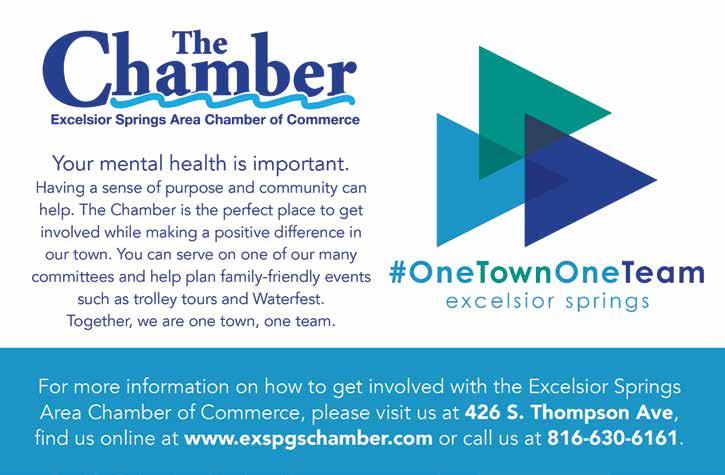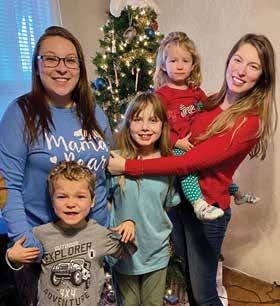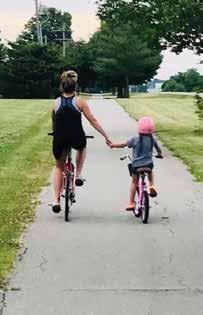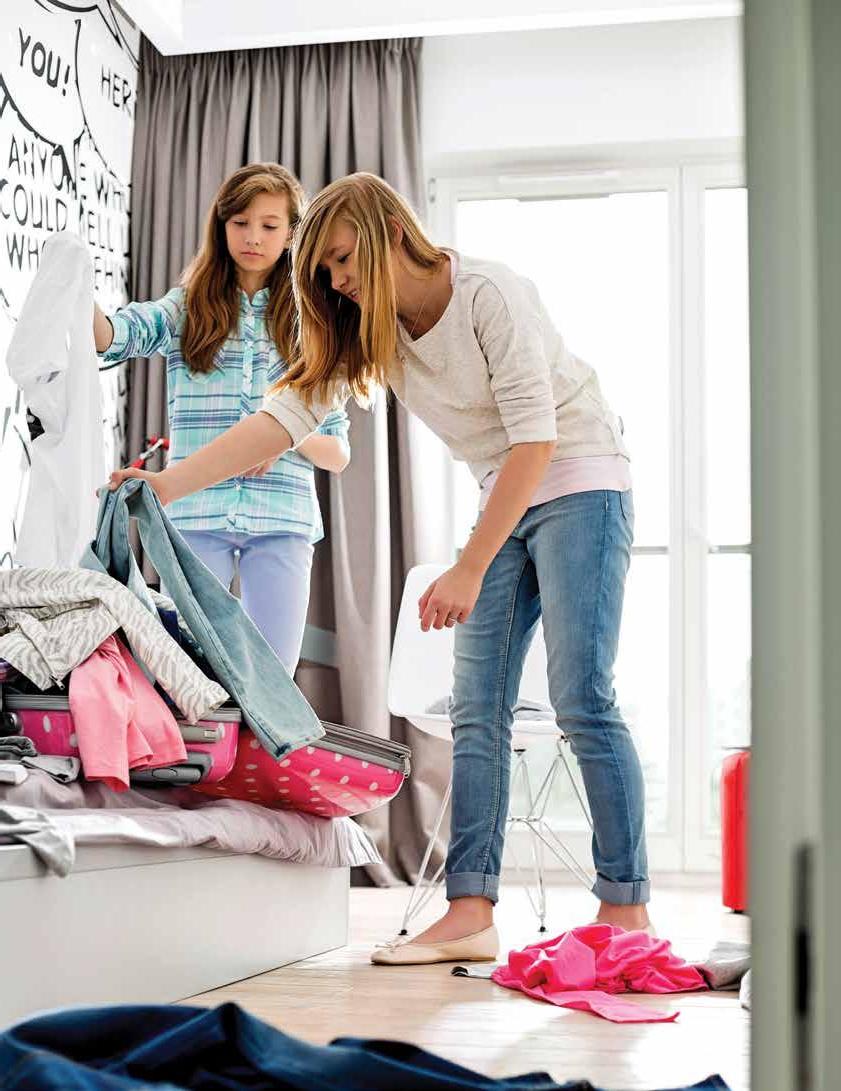
17 minute read
Decisions, Decisions...How Can We Prepare Our Children to Make Responsible Choices?
decisions...
How Can We Prepare Our Children to Make Responsible Choices?
“I don’t like playing anymore, but all my friends are joining the team again,” relays my eleven-yearold son, Ethan, voicing his debate over whether to commit to another season of baseball. He has played for a number of years cultivating valuable friendships along the way. But, as he’s grown, the coaches, parents, and kids alike have become more competitive. And so too has the pressure.
Ethan has enjoyed the game less as the emphasis on performance has increased. This spring, he was faced with the challenging decision: Do I continue to do something I’ve always done because my friends expect me to or do I follow my interests and motivation? Children are at the very beginning stages of developing decision-making skills. They grow from basing decisions on chance with games like “Rock, Paper, Scissors” or “Eeny, Meeny, Miny, Moe” to weighing pros and cons like whether to rejoin a baseball team that’s grown stressful. Then, in the teen years, youth face tempting risks like whether to follow peer pressure to try alcohol despite the fact that most parents — as confirmed in a recent survey of Missouri parents — disapprove of underage drinking. Children will increasingly have to decide when to accommodate friends, when to assert their needs, when to show care for others, and when and how they should think ahead about consequences that might result from their actions.
Young children rely on adults to establish and enforce the rules. Their central concern focuses on their own safety and secure attachment to their parents and educators. But, by the age of nine, children move to the next stage of moral development in which the care of others and their social relationships takes priority. This is also a time when children begin inventing their own rules among their peers through games. They weigh social values when decision making like belonging to a friend group, contributing to a team, or meeting parent and teacher expectations, comes into play. This new level of decision making is aided by the fact that children gain the ability to


see from others’ perspectives. This empathy is a skill that requires lots of practice. You may hear your child trying to read others’ minds but not exactly hitting the mark with their inferences: “Wendy stared at me in the hallway. My hair must look so weird today.” But actually Wendy was consumed with her own worries. She was staring aimlessly lost in her thoughts, not taking notice of your daughter’s hair. We can help by offering our own empathy for our child’s feelings and questioning negative perceptions: “I hear you’re feeling upset that she disapproved of your hair. Are you sure? Could it be that she was just having a bad day?”
Children around eight years old also gain the added decision-making support of selftalk. Though we, as adults, may view that inner voice as a way to criticize ourselves for our imperfections, in fact, it serves a critical self-regulating role. Instead of a child requiring a mom to warn her not to go near a hot fire, your child begins to tell herself, “Danger! Don’t go near the fire,” and guiding herself. She’s learned from years of hearing your warnings, and whether or not you are present to guide her, it’s been internalized. This is why our eights, nines, and tens seem more competent and trustworthy. Their internal warning system has been turned on, and they have enough life experience to help them avoid danger and make positive choices.
What does it mean to teach our children responsible decision making? The Collaborative for Academic, Social and Emotional Learning defines it as “the ability to make constructive and respectful choices about personal behavior and social interactions based on considerations of ethical standards, safety concerns, the realistic evaluation of the consequences that stem from actions and the wellbeing of self and others.” Children do not automatically connect their actions to a reaction. Yet, authentic responsible decision making requires consequential thinking. Preparing our children for independence in future years will require us to offer them numerous small chances to make decisions so that they are ready for the big choices to come. In fact, our children’s brain development will not solidify the rational, logical thinking required of the adult years until they are in their early to mid-twenties, so our ongoing practice of little choices helps strengthen those neural connections.
So, how can we prepare our children at any age to make responsible decisions? Here are some suggestions: 3-5-YEAR-OLDS: Offer frequent, limited, authentic choices. Young children are working on mastering numerous everyday life tasks like getting shoes on or putting toys away though they are not yet fully competent. These can add up to daily frustrations as a child refuses help while asserting, “I can do it myself!” Instead of getting sucked into daily power struggles, why not offer your child a sense of control, the chance to exercise their burgeoning skills as well as gain valuable practice in making small choices? Be certain both options are acceptable to you so that the choice is truly theirs to make. The most mundane of options — “Do you want to pick up the Lego set or books?” — can offer your young child a sense of agency and the motivation to go with it. So, think twice before you go ahead and grab the pink socks. Instead, discover the power of offering, “Will it be pink or red today? You choose.” 5-7-YEAR-OLDS: Become informed and establish rules together. As children are learning the rules of school, it’s a perfect opportunity to discuss home rules. What are some important principles your family values? Keep it simple and positive — what to do, not what not to do. “People before screens” is a favorite in our family. Then, as you go about your everyday life, talk about how it applies. When friend Aidan comes to the door to play, we turn off screens and take advantage of the play opportunity. Also, get into the habit of becoming informed together. Why should you limit screen time? Do you know how unlimited screen time can impact a child’s growing brain? Research and learn together. Then, create rules collaboratively. Your child will learn that in order to make responsible decisions, it’s important to become informed first and learn the relevant facts.
8-10-YEAR-OLDS: Learn about social justice and fairness issues. In the Highlights State of the Kid survey of 2,000 U.S. kids, ninety-three percent of 6-12-year-olds said they would take action if they saw someone doing or saying something mean. Because of our children’s raised social awareness at this age, it’s an ideal time to introduce them to issues of fairness around the world. Why are some people treated unfairly because of learning differences, color, creed, or mate preference? How can we reflect on these issues expanding our children’s circle of concern? And, how can we guide them to act with compassion since clearly they have the desire? Begin in your home community by identifying areas of need and working as a family to find ways to act with kindness, to include those who are excluded, and to serve others in need. 11-14-YEAR-OLDS: Follow through on repairing harm. Children make mistakes in order to learn, and sometimes those choices can harm others. Whether it’s hurt feelings or a broken toy, in order to learn responsibility our children need to repair the harm they’ve caused. Our children might naturally react by shying away from the person they’ve harmed, hoping that time will cure all. That’s why our support is critical. How can we help them follow through by mending a broken fence or by offering a sincere apology? If we assign a punishment such as, “Go to your room! You’re grounded!” Or “No iPad for a week,” we miss the opportunity to teach the natural, real world outcomes of their behavior that always exist if we pay attention. How will our child learn consequential thinking when we teach them that breaking a neighbor’s china teacup equates to no iPad for a week? Our angry child will come to the conclusion that we are simply trying to cause them pain. They cannot see any logical connection because there isn’t one. Instead you might say, “You broke Mrs. Jackson’s teacup when you were throwing the ball in the house. How do you think you could repair it as well as the relationship with Mrs. Jackson?” If their idea is safe and reasonable, support it by guiding alongside them as they follow through on actions and words to repair harm caused.
If you help your child reflect thoughtfully on their choices, you’ll create a habit that will serve them for a lifetime. Discuss what their highest priorities are and how this choice does or does not align with them. Share your own family values and how they impact your decision making. Most importantly, project ahead to the future. If you choose to play on the team, how will you feel in August at your final game — happy or burned out? As parents, we frequently face the most challenging decisions of our lives in raising our children to be confident, compassionate, and independent future adults. As we guide our children to practice taking responsibility through their everyday choices, we take essential steps toward that greater goal. ■
About The Author: Jennifer S. Miller, M.Ed., author of the popular site, Confident Parents, Confident Kids, has twenty years of experience helping adults become more effective with the children they love through social and emotional learning. She serves as a writer for ParentingMontana.org: Tools for Your Child’s Success, a statewide media campaign to educate parents on social and emotional learning. Her book, “Confident Parents, Confident Kids; Raising Emotional Intelligence in Ourselves and Our Kids — From Toddlers to Teenagers” is available now for pre-order.
Check out who’s standing out in our community.
IS THERE SOMEONE YOU’D LIKE TO NOMINATE?
Please email safedfc@gmail.com and tell us why this individual has stood out in your crowd.
FACES
IN THE CROWD
Madeline Andreasen EXCELSIOR SPRINGS MIDDLE SCHOOL, 8TH GRADE Madeline is a model student at Excelsior Springs Middle School. She is an extremely responsible student who all teachers enjoy having in class. Madeline goes out of her way to make sure other students are helped and is constantly looking for ways to make the middle school a better place. As a WEB Leader, Madeline assists 6th grade students with their transition to the middle school and any technology needs that they might have. Outside of the classroom, Madeline participates in multiple activities for the Tigers. Thank you, Madeline, for being such a positive role model!
Taylor Lane SCHOOL COUNSELOR Ms. Lane’s colleague writes: “Taylor is an incredibly positive person who always sees the best in people. In her role as School Counselor, she is constantly working with young people to help them see the best in themselves. Taylor is a loving and dedicated professional who takes the time to make the young people she works with feel truly valued. I cannot think of a person more dedicated to helping young people meet their potential. Taylor is an incredibly passionate ally for youth. She goes above and beyond to make sure the young people she works with have the resources to succeed. She cares deeply for their emotional and mental well being and it shows in how hard she works for her students.”
Jacey Brewer EXCELSIOR SPRINGS HIGH SCHOOL, JUNIOR Jacey is a one-of-a-kind junior at Excelsior Springs High School! She is wise beyond her years, driven in all aspects her life, and is truly a model citizen, student, and athlete. Jacey has achieved Principals’ Honor Roll throughout her time at ESHS and is a member of National Honor Society. She competes as a varsity athlete for cross country, wrestling, and track and field. Outside of school, Jacey is the founder of Small Town Sidekicks, a non profit organization that focuses on providing toys and supplies to kids and families in need. The organization primarily benefits Children’s Mercy Hospital, to whom they recently donated nearly $1000 in Happy Kits. We are so proud of Jacey and can’t wait to see what her future holds!
Excelsior Springs Early Childhood Center Staff
The staff at the Excelsior Springs Early Childhood Center does an amazing job of working with their students. The students eagerly leave the car/bus each day and are greeted by staff and escorted into the building. They work diligently each day to teach not only educational skills, but also social-emotional skills. Almost all of the staff has either attended Conscious Discipline 1 Training or attended multiple professional development opportunities for Conscious Discipline. This has allowed them to further create a safe and loving environment for kids. The staff recently won SAFE’s Community Champion award for encouraging positive “Bonding to School,” which was the Developmental Asset of the month. Thank you, ECC staff, for all that you do for kids and families!
Big Brothers Big Sisters Kansas City (BBBSKC) serves the Excelsior Springs area. BBBSKC works to clear the path to a child’s biggest possible future by matching them with a caring, adult mentor in a one-to-one friendship. “Bigs” help “Littles” ignite, empower, and defend their potential by standing with them. Last year, 100% of the Senior Littles graduated high school, 83% reported improved self esteem, and 71% reported improved grades since being matched. BBBSKC is currently recruiting “Littles” in 2nd-11th grades as well as “Bigs.” If you already are mentoring a child and would like to sign up as a pair and receive support from BBBSKC, that’s an option too. Learn more at www.bbbskc.org.
I may not say it, but I still need you to help keep me safe.
The rules you set and the relationship you have with your teen make a BIG difference in the decisions teens make. Talk to your kids about your no-use expectations around substance use.
Need help? Find tips and tools at ParentUpKC.com!

40 DEVELOPMENTAL ASSETS
40 Developmental Assets are essential qualities of life that help young people thrive, do well in school, and avoid risky behavior.
Youth Connections utilizes the 40 Developmental Assets Framework to guide the work we do in promoting positive youth development. The 40 Assets model was developed by the Minneapolis-based Search Institute based on extensive research. Just as we are coached to diversify our financial assets so that all our eggs are not in one basket, the strength that the 40 Assets model can build in our youth comes through diversity. In a nutshell, the more of the 40 Assets youth possess, the more likely they are to exhibit positive behaviors and attitudes (such as good health and school success) and the less likely they are to exhibit risky behaviors (such as drug use and promiscuity). It’s that simple: if we want to empower and protect our children, building the 40 Assets in our youth is a great way to start.
Look over the list of Assets on the following page and think about what Assets may be lacking in our community and what Assets you can help build in our young people. Do what you can do with the knowledge that even through helping build one asset in one child, you are increasing the chances that child will grow up safe and successful. Through our combined efforts, we will continue to be a place where Great Kids Make Great Communities.
Turn the page to learn more!
The 40 Developmental Assets® may be reproduced for educational, noncommercial uses only. Copyright © 1997 Search Institute® , 615 First Avenue NE, Suite 125, Minneapolis, MN 55413; 800-888-7828; www.search-institute.org. All rights reserved.
assets in action 40 DEVELOPMENTAL ASSETS
8
Spencer and Christian help unload commodities at Good Samaritan Center

1 18

Time with extended family is special
15
Hope proudly shows her well-earned golf medal
Emory and Amelia planned their own safe New Year’s Party

SUPPORT
1. Family support: Family life provides high levels of love and support. 2. Positive family communication: Young person and her or his parent(s) communicate positively, and young person is willing to seek advice and counsel from parent(s). 3. Other adult relationships: Young person receives support from three or more nonparent adults. 4. Caring neighborhood: Young person experiences caring neighbors. 5. Caring school climate: School provides a caring, encouraging environment. 6. Parent involvement in school: Parent(s) are actively involved in helping young person succeed in school.
EMPOWERMENT
7. Community values youth: Young person perceives that adults in the community value youth. 8. Youth as resources: Young people are given useful roles in the community. 9. Service to others: Young person serves in the community one hour or more per week. 10. Safety: Young person feels safe at home, at school, and in the neighborhood.
BOUNDARIES & EXPECTATIONS
11. Family boundaries: Family has clear rules and consequences and monitors the young person’s whereabouts. 12. School boundaries: School provides clear rules and consequences. 13. Neighborhood boundaries: Neighbors take responsibility for monitoring young people’s behavior. 14. Adult role models: Parent(s) and other adults model positive, responsible behavior. 15. Positive peer influence: Young person’s best friends model responsible behavior. 16. High expectations: Both parent(s) and teachers encourage the young person to do well.
CONSTRUCTIVE USE OF TIME
17. Creative activities: Young person spends three or more hours per week in lessons or practice in music, theater, or other arts. 18. Youth programs: Young person spends three or more hours per week in sports, clubs, or organizations at school and/or in the community. 19. Religious community: Young person spends one or more hours per week in activities in a religious institution. 20. Time at home: Young person is out with friends “with nothing special to do” two or fewer nights per week.
If you or your child would like to submit a picture that represents one of the 40 Developmental Assets, please email safedfc@gmail.com with a picture and the number of the asset the picture represents.
22
Not all pictures are guaranteed publication.
COMMITMENT TO LEARNING
21. Achievement motivation: Young person is motivated to do well in school. 22. School engagement: Young person is actively engaged in learning. 23. Homework: Young person reports doing at least one hour of homework every school day. 24. Bonding to school: Young person cares about her or his school. 25. Reading for pleasure: Young person reads for pleasure three or more hours per week.

POSITIVE VALUES

26. Caring: Young person places high value on helping other people. 27. Equality and social justice: Young person places high value on promoting equality and reducing hunger and poverty. 28. Integrity: Young person acts on convictions and stands up for her or his beliefs. 29. Honesty: Young person “tells the truth even when it is not easy.” 30. Responsibility: Young person accepts and takes personal responsibility. 31. Restraint: Young person believes it is important not to be sexually active or to use alcohol or other drugs.
SOCIAL COMPETENCIES
32. Planning and decision making: Young person knows how to plan ahead and make choices. 33. Interpersonal competence: Young person has empathy, sensitivity, and friendship skills. 34. Cultural competence: Young person has knowledge of and comfort with people of different cultural/racial/ethnic backgrounds. 35. Resistance skills: Young person can resist negative peer pressure and dangerous situations. 36. Peaceful conflict resolution: Young person seeks to resolve conflict nonviolently.
POSITIVE IDENTITY
37. Personal power: Young person feels he or she has control over “things that happen to me.” 38. Self-esteem: Young person reports having a high self-esteem. 39. Sense of purpose: Young person reports that “my life has a purpose.” 40. Positive view of personal future: Young person is optimistic about her or his personal future.

Elijah loves learning through building with blocks at school
20 33
Free time at home means bike rides with mom
25
Good friends support and care for each other
Reading is fun no matter what age you are





